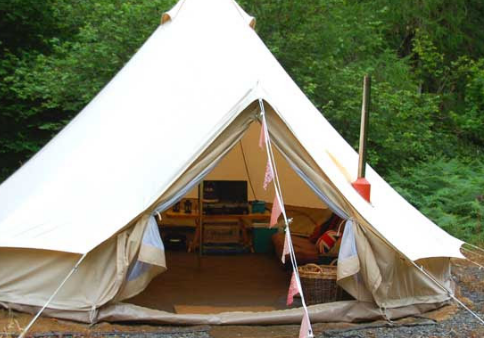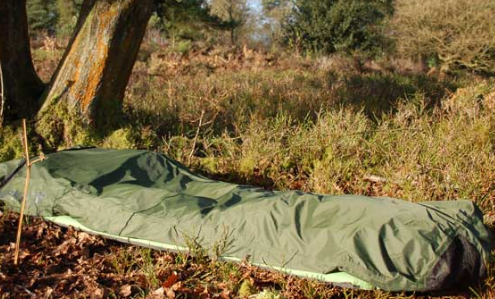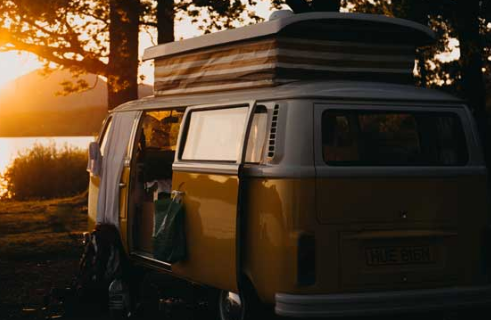There are no set rules about how, where, and why you like camping. Even in each vague type of camping, everyone does it differently. Different types of camping enable different types of campers to enjoy sleeping outdoors in a way that suits them.
This article outlines some of the types of camping you may or may not have heard of. Maybe you just know that they have different names? The list is certainly not definitive, just a guide to help campers understand what other types of camping scenarios they can use and things not to miss in their lifetime of wild napping under the stars.

In addition to personal preference, some campers will choose a specific type of camping based on their location, season, and available equipment. The cost of camping (and all its associated gear) can also have an impact.
Here’s an overview of the 7 different types of camping (in no particular order):
Glamping

Glamping is the ideal way to enjoy time outdoors without sacrificing comfort and luxury. As glamping has grown, so has people’s lifestyles. Glamping resorts are everywhere and offer top-of-the-line accommodations that rival five-star hotels. These enable vacationers to completely eliminate all the hassles that are usually associated with camping. As a result, glamping can be one of the most expensive types of camping, although you don’t need to invest in any gear to make it happen.
At the other end of the glamping collection is DIY glamping. This is for those who want to enjoy a little luxury, but also like to create their own. It also means they don’t have to pay high fees for camping in exclusive locations. DIY glamping can be done at any campsite, in a backyard, or even in a backcountry (if you can drive your car there).
Car Camping

Car camping is one of the most common types of camping. It involves filling your car with camping gear, driving to your preferred campsite, and setting up a tent next to your car. The beauty of car camping is that you can take everything you could possibly need with you and it’s only limited by the size of the car. It’s also an inexpensive way to take a break with your family. Once you’ve invested in all your camping gear, the cost of a campsite is usually very affordable.
Wild Camping

The term wilderness camping is used in a few different ways. RV enthusiasts and campers tend to use it to describe parking in the middle of nowhere. For me, however, wilderness camping is all about pitching a tent in the middle of nowhere!
Wilderness camping goes hand in hand with backpacking, canoe camping, and bike tours. Its very nature means that you are so far away from civilization that you have to carry all your camping gear with you. For hikers, cyclists, and canoeists, wilderness camping offers the possibility of long-term wilderness adventures.
Due to its high performance and light weight, backcountry camping gear can be expensive. However, once you have everything you need (some of which you can rent), wild camping is completely free!
Bivvying

Bivvying is camping in the wild, but without a tent!Instead, the camper will curl up in a camping bag, which is essentially a waterproof bag that provides enough protection from the elements.
Bivvying is a type of wilderness camping where campers can spend the night in areas where the legality of camping may be questioned. The rules for backcountry camping vary from country to country, and some people believe that sleeping without a tent actually doesn’t count as camping. Before sleeping in someone else’s private property, check the local rules!
Sleeping without a tent also means you can move on quickly and easily, and you’re also more unobtrusive. Caution when camping is key, and choosing the right camping spot is also important. The principle of “leaving no trace” is more important than ever.
From a cost perspective, camping is a cheaper way to camp than backcountry camping. A decent camping bag is much cheaper than a lightweight tent. It’s smaller, lighter, and portable, which makes camping a great choice for short-distance bike backpackers, canoe campers, and backpackers.
Hammock Camping

Hammock camping is another variant of wilderness camping that can be done anywhere, as long as there are two things that can be attached to the hammock. The main advantage of hammock camping over camping is that you don’t have to rely on finding flat, dry ground to set up camp. It’s also more comfortable than sleeping on a hard floor, and a lot of people sleep better just hanging out!
Since most modern hammocks are lightweight, opting for hanging sleep is a popular choice for backpackers, bike backpackers, and canoe campers. But a lot depends on where the hammock is placed and the availability of the place. Most hammock campers also have tarps that can be set up in hammocks in case of inclement weather.
You can pay for a hammock as much as you like, depending on its features (built-in insect nets, pockets, insulation, etc.). Many of the hammocks were even made themselves. So, like camping, hammock camping is another very affordable way to enjoy camping.
RVing

Camping in an RV or campervan is the ultimate way to travel and enjoy the wilderness with complete freedom. It is also an excellent option for those who live in areas with cold/less temperate climates.
Many motorhome enthusiasts only camp at campsites. This allows them to connect to electricity, water, and wastewater pipes, ensuring that they enjoy all the comforts of living in a small apartment.
However, many van campers and RV campers prefer to hit the road and park in the middle of nowhere for camping. This is known as camping, wilderness camping, or dryland camping. It lives only on electricity provided by a built-in generator or battery. But this type of van and RV camping can reduce costs and provide greater freedom of travel.
Obviously, buying an RV or campervan is a considerable investment. It’s also a great way for camping enthusiasts to have a more comfortable camping experience in their later years.
Winter Camping
Winter camping is a fairly general term that can include all of the above types of camping, just in very cold conditions! However, winter camping does require a whole host of other skills and specific knowledge to ensure an enjoyable experience and not just survival exercises.
For most people, winter camping involves snow. So, to cope with the additional challenges that snow brings to life in the wild, these factors need to be managed for much of the time of winter camping. Digging snow holes, collecting and chopping firewood, lighting a fire, keeping hot water bubbling and cooking delicious food are all part of the winter camping experience. The same goes for clearing snow and managing camping areas.
Some campgrounds are open year-round, making things easier. That said, many people go to remote areas for winter camping, which makes it another low-cost option. From a cost perspective, winter tents and cold-weather gear tend to be more expensive than three-season gear.
As mentioned earlier, the above types of camping are by no means set in stone, and the list is not definitive. However, for those who are new to the world of camping, it is important to know what your options are to help determine which route you want to take. For those who are used to the current way of camping, maybe it’s time to expand and try a different style of camping?!

